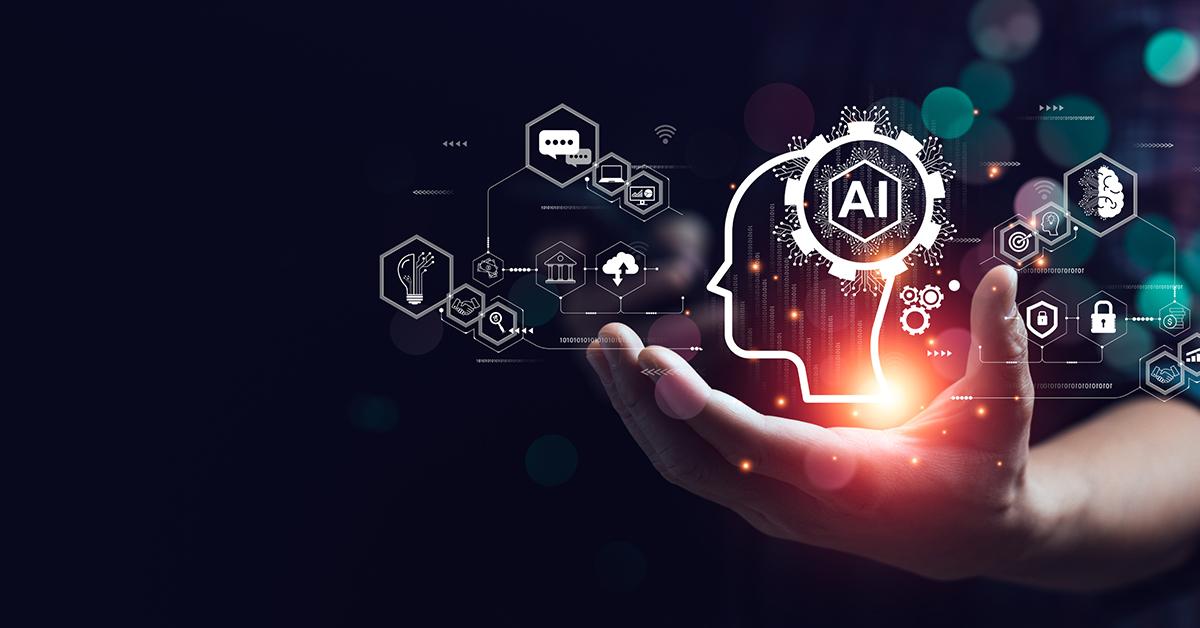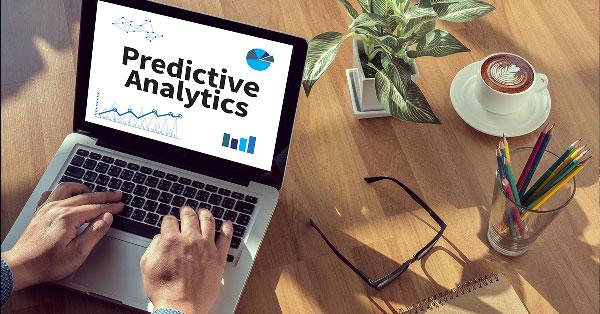
The smart use of Artificial Intelligence is flourishing among multiple professions across the economy. Everyone is impressed by the capabilities of AI-powered tools today, let alone their utility in making tasks easier and quicker. It's true that AI enables machines to learn from their experiences, adapt to new inputs, and execute human-like activities. This has paved the pathway to an AI-powered prediction system that is capable of algorithmic forecasting, an ability that can improve efficiency, accuracy, and decision-making in a wide range of industries.
2023’s top marketing conferences, like Marketing 2.0 Conference, dive deeper into the prognostic ability of AI-powered systems and explore their usage in the field of business. In this article, we will discuss expert insights about AI-powered tools, analyze the characteristics of AI-driven predictive modeling and understand how it can be used to forecast customer behavior.
What Is An AI-Powered Tool?
An artificially intelligent tool employs coded intelligence to improve or automate a process or system. AI is a vast field concerned with developing intelligent robots capable of doing activities that normally require human intellect. Algorithms and machine learning are used by AI-powered applications to evaluate data, detect patterns, and make predictions or judgments based on that data. For example, an AI-powered chatbot can interpret and reply to client inquiries using natural language processing, whereas an AI-powered recommendation engine may evaluate user behavior to identify items or services that are likely to be of interest. AI-powered technologies have the potential to increase productivity, accuracy, and decision-making across a wide range of industries.
Predictive Analysis By AI
As the term suggests, predictive analysis is a systematic prediction of data. It forecasts future occurrences using previous data. In most cases, historical data is utilized to construct a mathematical model that captures significant patterns. The predictive model is then used on current data to forecast what will happen next or to indicate actions to take in order to achieve the intended results.
How Does AI-Powered Prediction Work?
Machine learning algorithms are used to evaluate massive volumes of data and uncover patterns and trends in AI-powered prediction. The algorithms learn from the data and apply what they've learned to forecast future occurrences or outcomes. Data gathering, data cleansing, feature selection, model training, and model assessment are all phases of the process. The data is sent into the machine learning algorithm, which uses statistical techniques to find patterns and correlations.
The algorithm then builds a model that may be used to forecast fresh data. Prediction accuracy is determined by the quality of the data and the performance of the machine learning algorithm. The AI-powered prediction may be used to anticipate consumer behavior, detect fraud, predict equipment failure, and forecast weather trends, among other things. Many experts at global marketing summits believe such predictive models to be incredibly useful in marketing and business.
Predictive Analytics In Marketing And Businesses
Since an AI-powered prediction tool makes automated judgments using artificial intelligence technology, it is possible to understand the fundamentals of a business using this concept. Simply put, by reading and recognizing existing patterns and data, an AI projection model can very well predict the future of that data. There are many variations. These judgments are based on data that has been acquired, evaluated, and interpreted in conjunction with the market trend. The idea is to create a marketing plan that predicts the next action of the buyer.
IT specialists and marketing professionals unite at global events like Marketing 2.0 Conference, to gather, share and extend their existing knowledge about the possibilities of AI-powered marketing tools in 2023. Experts discuss that the entire prediction process occurs in real time, without the assistance of a person. They believe that this ability to make automatic judgments at breakneck speed is what makes AI marketing solutions for businesses so powerful in today’s era.
Using AI-Powered Prediction For Business Profits
Organizations may obtain a greater understanding of trends and patterns in workers, customers, and rivals based on past experience and outcomes. They can also forecast success and security while mitigating risk. This is the outcome of collecting and evaluating current data from many sources, including emails, files, instant chats, CRM software, relational databases, collaboration tools, and social media.
The manifold possibilities of using predictive AI models in business include:
- Predicting purchasing behavior in retail,
- Detecting fraud in financial services,
- Predicting equipment failure in manufacturing,
- Predicting customer churn in telecommunications,
- Predicting disease outbreaks in healthcare,
- Predicting traffic congestion in transportation,
- Predicting weather patterns in agriculture, and so on.
Predictive analytics may also be used to improve supply chain management and boost the customer experience. In a variety of businesses, predictive analytics offers the ability to enhance decision-making, cut costs, and boost efficiency.

Forecasting Customer Behavior With Predictive Analytics
As we have learned, predictive behavior modeling is the study of predicting consumer behavior by using mathematical and statistical tools on historical and transactional data. Global marketing events in 2023 have made predictive behavior modeling a top agenda in their discussions. Researchers believe that its application goes beyond just passive customer analytics. It can additionally be used to determine the optimal marketing actions to perform on each set of consumers, as well as to identify which customers are likely to modify their spending level.
Speakers and professionals at global marketing summits discuss the benefits of AI models. According to them, every marketing campaign and retention activity can be more effective if marketers can target particular clients with the exact marketing activities likely to have the most desirable impact. If companies had the power to correctly predict which consumers would stir and which marketing initiatives will cause them to remain long-term clients, businesses can spiral to the top of the ladder. Furthermore, customers will perceive the company's interactions with them to be more relevant, resulting in higher satisfaction, brand loyalty, and well-recommendations.
Advantages Of Customer Projection Using AI Prediction Models
Predictive models can increase product appeal for businesses. Since it allows an insight into the likes and dislikes and demands and needs of the target market's chosen segment, businesses can easily learn and adapt to the requirements. Additionally, prediction is a direct advantage.
According to experts at top marketing conferences in 2023, predictive analytics is most commonly used in generating demand models that estimate sales and revenue – the beginning point for budgeting. An added advantage of customer behavior prediction is customer happiness and satisfaction. Any increase in customer satisfaction has a potentially large influence on ROI. That is the fundamental foundation for the growth of relationship marketing, in which marketing changes its attention from gaining new clients to delighting current ones. Though these advantages offer a positive edge to businesses, professionals at global marketing summits also discuss the flipside of the coin; are there any potential drawbacks to AI predictive analytics in customer behavior?
Implementing Predictive Analytics: Challenges
It is said that doctors are the worst patients. This can be said for the power of prediction in customer behavior too. Having the data can make it difficult to use the data altogether. It becomes difficult to gain a clear picture of how customers respond to marketing initiatives. Using data mining tools mindlessly produces no insights and may obscure actual correlations hidden in the data. Instead, understanding customer behavior should lead to an analysis by identifying variables that are likely to influence crucial behaviors. Marketers are rarely educated in data analysis techniques, and the schools and institutions that corporations rely on to teach these abilities often steer away from the responsibility.
To address this issue, experts at global marketing events suggest businesses hire engineers. In 2023, many analytics companies are on the hunt for data analytics professionals and IT specialists who can implement predictive analysis successfully. Companies need to recruit engineers with strong analytical abilities to alleviate this problem.
AI Prediction Models That Can Help Forecast Customer Behavior
Predictive analytics and machine learning are combined together to yield a great customer behavior analysis system. It enables companies to learn from data and predict future events or outcomes. Machine learning may be used to examine consumer data in order to uncover trends that can be used to forecast future behavior. Natural language processing (NLP) may also be used to evaluate consumer feedback and social media data in order to get insights into customer behavior and preferences.
How To Learn About AI Prediction Models To Boost Your Business
Though the trend of AI is rather prevalent today, many companies are still unaware of the AI prediction tools that they can equip themselves with. In the United States, there are various AI prediction models that can assist in forecasting client behavior. Many global marketing events of 2023 aim to teach companies about them and to make them understand their functioning. Marketing 2.0 Conference is one such global marketing summit that educates enthusiasts about business models that can help them improve their ranking on a global scale.

